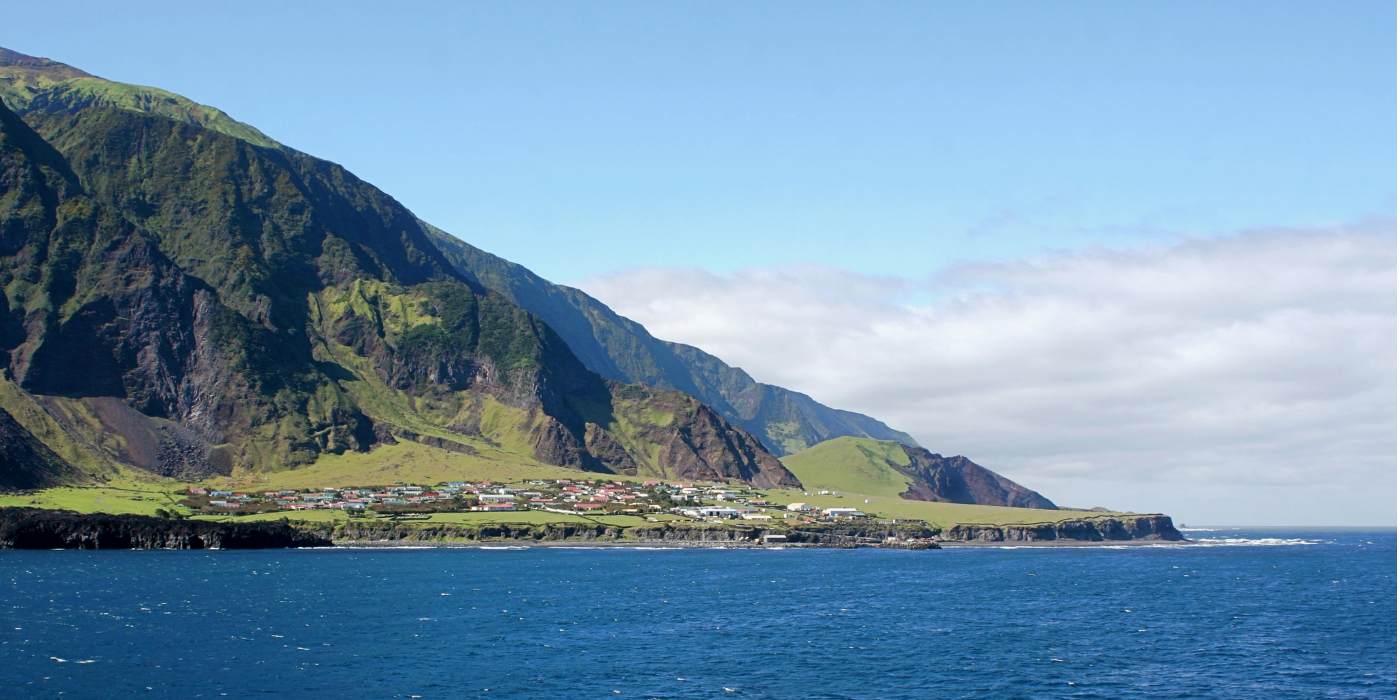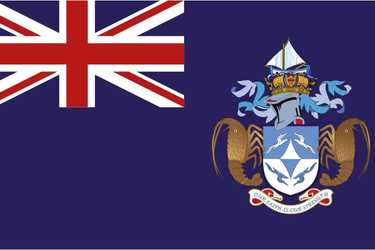

The best time to visit is between December and March, during the Southern Hemisphere summer. Temperatures are milder (10°C–25°C), and the seas are calmer, which is important as all travel is by ship. This period also coincides with the breeding seasons of local wildlife, such as albatrosses and northern rockhopper penguins, making it a fantastic time for nature lovers and photographers.
Bear in mind that Tristan’s climate is cool, wet, and windy year-round, with quick changes in weather. Visiting requires advanced planning: you’ll need to coordinate with official shipping schedules and often apply for permission months in advance. But for intrepid travelers, the reward is a raw and rare island experience found nowhere else on Earth.
• Edinburgh of the Seven Seas – The world’s most remote permanent settlement, with colorful houses and a peaceful, close-knit community. The town is surrounded by potato patches and wild landscapes.
• The Volcano of 1961 – Hike to the lava flow from the eruption that temporarily displaced the islanders. The path offers dramatic views and a sense of the island’s powerful geologic forces.
• St. Mary’s Church – A charming stone church built in the 1920s, still in use today. It’s a community hub and an architectural gem.
• Tristan Settlement Museum – Learn about the island’s history, the 1961 evacuation, and the resilient culture of the islanders through personal artifacts and photographs.
• The Potato Patches – This fertile farming area outside the main village provides food for the entire population. It’s also a great walk with sweeping views of the ocean and island interior.
• Nightingale Island (by permit) – A rarely visited satellite island and critical bird sanctuary. Home to thousands of seabirds and the elusive Tristan thrush.
• The Thatched House Museum – A replica of traditional island homes, offering a glimpse into life before modern construction. It’s both nostalgic and educational.
• Big Point Lookout – A coastal walk to a dramatic cliffside viewpoint where you can spot seals and seabirds. The trail is often misty, adding to the otherworldly atmosphere.
• Queen Mary’s Peak – The summit of the volcanic cone, towering at 2,062 meters. A multi-day, challenging hike for only the most experienced trekkers.
• Penguin Colonies (seasonal) – Along certain coasts, you can spot northern rockhopper penguins, often waddling right past hikers. Always maintain respectful distance.
• Plan at least 6 months in advance – Visitor access is limited, and permission must be granted by the island council.
• Pack for all weather – Rain, wind, and sun can all occur in a single day.
• Bring your own medical kit – There’s a small hospital, but no specialized care or pharmacies.
• Cash only – There are no ATMs; bring British pounds with you.
• No mobile phone coverage – Wi-Fi is limited and mainly at the admin center or guesthouses.
• Mail a postcard – The island postmark is one of the rarest in the world.
• Respect the rhythm of life – Life here is slow and cooperative; patience is essential.
• Fishing is everything – Rock lobsters are the economic backbone of the island. You may even get to try some fresh.
• Don’t walk alone near cliffs – High winds and loose terrain make it risky without a guide.
• Join a community event – If you’re invited to a gathering or church service, go! Islanders are incredibly warm.
• Anniversary Day (Tristan Day) – Celebrated on August 14, it commemorates the annexation of the island by the British in 1816. Islanders gather for speeches, church, food, and games.
• Old Year’s Night – New Year’s Eve is marked with a special midnight church service and family gatherings, followed by toasts and fireworks.
• St. Joseph’s Day – March 19 marks the patron saint of the island. Islanders attend mass and often enjoy a day off with traditional meals.
Do you need a visa to visit the island?
Yes, all visitors to Tristan da Cunha must obtain prior permission from the Island Council before travel. While UK citizens have slightly easier access as it’s a British Overseas Territory, all nationalities must apply in advance, and approval is not guaranteed. There’s no visa-on-arrival or tourist infrastructure, so trips must be arranged with care and well ahead of time.
What is the best way to get to the island?
There is no airport, so the only way to reach Tristan da Cunha is by sea. The most common route is a six-day boat journey from Cape Town, South Africa, aboard one of the scheduled fishing vessels or supply ships. These trips are infrequent and must be booked months in advance with official approval.
Should I rent a car on the island?
No. There are almost no vehicles on Tristan, and the few that exist are used by the local administration. Visitors explore on foot or by joining community members on walks or informal rides in small utility vehicles when needed.
Is the island wheelchair accessible?
Accessibility is limited. There are no paved roads or formal accessibility infrastructure. Terrain is rugged and hilly, and facilities are minimal. However, if visiting with assistance or staying in guest accommodations in Edinburgh of the Seven Seas, limited support may be available by arrangement.
What are the island’s most famous landmarks?
Highlights include the dramatic Queen Mary’s Peak, the 1961 volcanic crater, St. Mary’s Church, the Thatched House Museum, and the settlement of Edinburgh of the Seven Seas itself. The entire island is a living museum of resilience and natural wonder.
What are the best beaches on the island?
While not traditional sunbathing spots, Tristan has scenic volcanic shores and black sand beaches like Runaway Beach and Pigbite Beach, used more for fishing or hiking than swimming. The rough Atlantic waves and strong currents make ocean swimming hazardous.
What is unique about the island’s wildlife?
Tristan da Cunha is part of a UNESCO Biosphere Reserve and home to rare birds like the Tristan albatross, Atlantic yellow-nosed albatross, and the endangered northern rockhopper penguin. Seals and whales are also frequently seen offshore, making it a haven for naturalists and conservationists.
What traditional foods should you try on the island?
Meals are based on locally grown potatoes, fresh fish, and rock lobster. Island favorites include lobster pie, potato puddings, and hearty stews. Everything is made from scratch, with food sourced from gardens, sea, and limited imported goods.
Can you drink tap water on the island?
Yes. The island’s tap water is sourced from freshwater springs and is clean and safe to drink. Many locals collect rainwater as well.
What is the nightlife like on the island?
There are no clubs or bars. Nightlife consists of community events, gatherings in homes, or quiet evenings under the stars. Occasional dances, storytelling nights, and music events are held at the community center or school.
How can I stay connected to the internet on the island?
Internet access is very limited and slow. Wi-Fi is only available in the admin center or through a shared satellite connection in some guesthouses. There’s no mobile phone network. Tristan is a true digital detox destination.
What are some local souvenirs to bring home from the island?
Popular souvenirs include handmade wool items (like sweaters from Ouessant sheep), locally carved wooden crafts, postcards with the rare Tristan postmark, and commemorative stamps. You can also bring back stories and photos few others in the world will ever have.
Let me know if you'd like a sample itinerary, travel permit tips, or how to apply for a supply ship voyage — only here on Isla Guru, where the most remote dreams come true!
#TristanDaCunha #EdgeOfTheWorld #IslandDreams #VolcanoLife #IslaGuru
Ask ChatGPT
